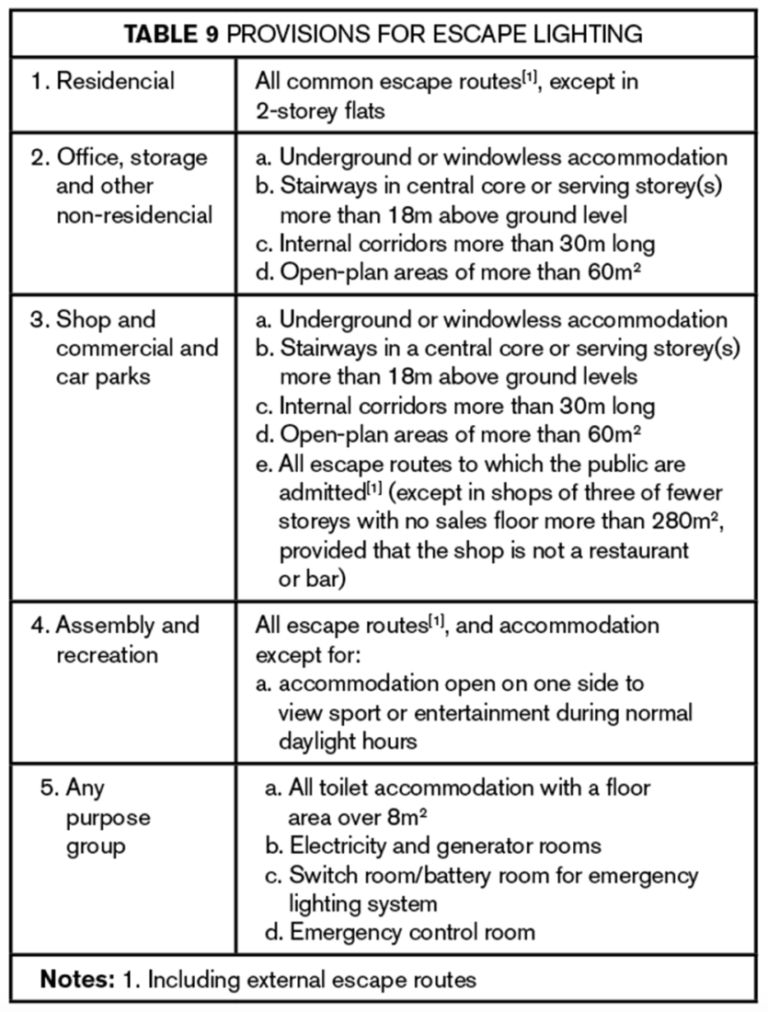Building regulations in the UK are in place to ensure that all buildings have emergency lighting and that the lighting conforms to BS 5266 part 1. This means that the latest best practices should be applied, as this is not just guidance but a legislative requirement.
The UK Building Regulations are designed to ensure that all buildings are safe and secure for occupants and visitors. This includes making sure that all emergency lighting is installed correctly and meets the necessary standards. The regulations also require that any new buildings or renovations must adhere to these standards, as well as any existing buildings which may need to be updated.

The BS 5266 part 1 code of practice sets out the requirements for emergency lighting, including the type of lighting, its installation, testing and maintenance. It also outlines the minimum levels of illumination required in different areas of a building, such as corridors and stairwells. BS 5266 part 1 also specifies the types of signs which must be used to indicate emergency exits and other safety features.
To ensure compliance with these regulations, it is important for businesses to ensure that their emergency lighting is regularly tested and maintained. This can be done by an independent contractor or by a qualified electrician. Regular testing will ensure that the lighting is working correctly and meets the necessary standards.
Emergency lighting is a critical safety feature in any building, as it ensures that people can safely evacuate in the event of an emergency. It is especially important in buildings with long corridors, open plan areas, windowless or underground accommodation, and stairways.
In conclusion, emergency lighting is a critical safety feature that must be installed and maintained properly to ensure the safety of occupants in the event of an emergency.

